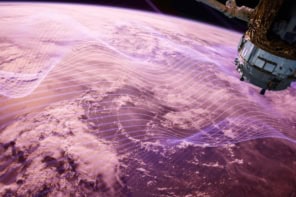Whenever you hear about CERN these days, it tends to be dominated by news about the Large Hadron Collider and its hunt for fundamental particles. But there are plenty of other experiments taking place at CERN, spanning a wide range of science.
One of them is the CLOUD experiment, designed to recreate processes in the atmosphere and their wider impact on Earth’s climate. The Cosmics Leaving OUtdoor Droplets project is designed to investigate the possible influence of galactic cosmic rays on Earth’s clouds and climate.
In this special video report for physicsworld.com CLOUD project leader Jasper Kirkby explains what his team is trying to achieve with its experiment. “We’re trying to understand what the connection is between a cosmic ray going through the atmosphere and the creation of so-called aerosol seeds – the seed for a cloud droplet or an ice particle,” Kirkby explains.
The CLOUD experiment recreates these cloud-forming processes by directing the beamline at CERN’s proton synchrotron into a stainless-steel chamber containing very pure air and selected trace gases.
One of the aims of the experiment is to discover details of cloud formation that could feed back into climate models. “Everybody agrees that clouds have a huge effect on the climate. But the understanding of how big that effect is is really very poorly known,” says Kirkby.
If you enjoyed this video, you can also learn about CERN’s hunt for the elusive Higgs boson in this recent video report from the ATLAS and CMS collaborations. Then in this separate video you can learn about how CERN’s ALICE experiment is trying to recreate the moments that existed just picoseconds after the Big Bang.



